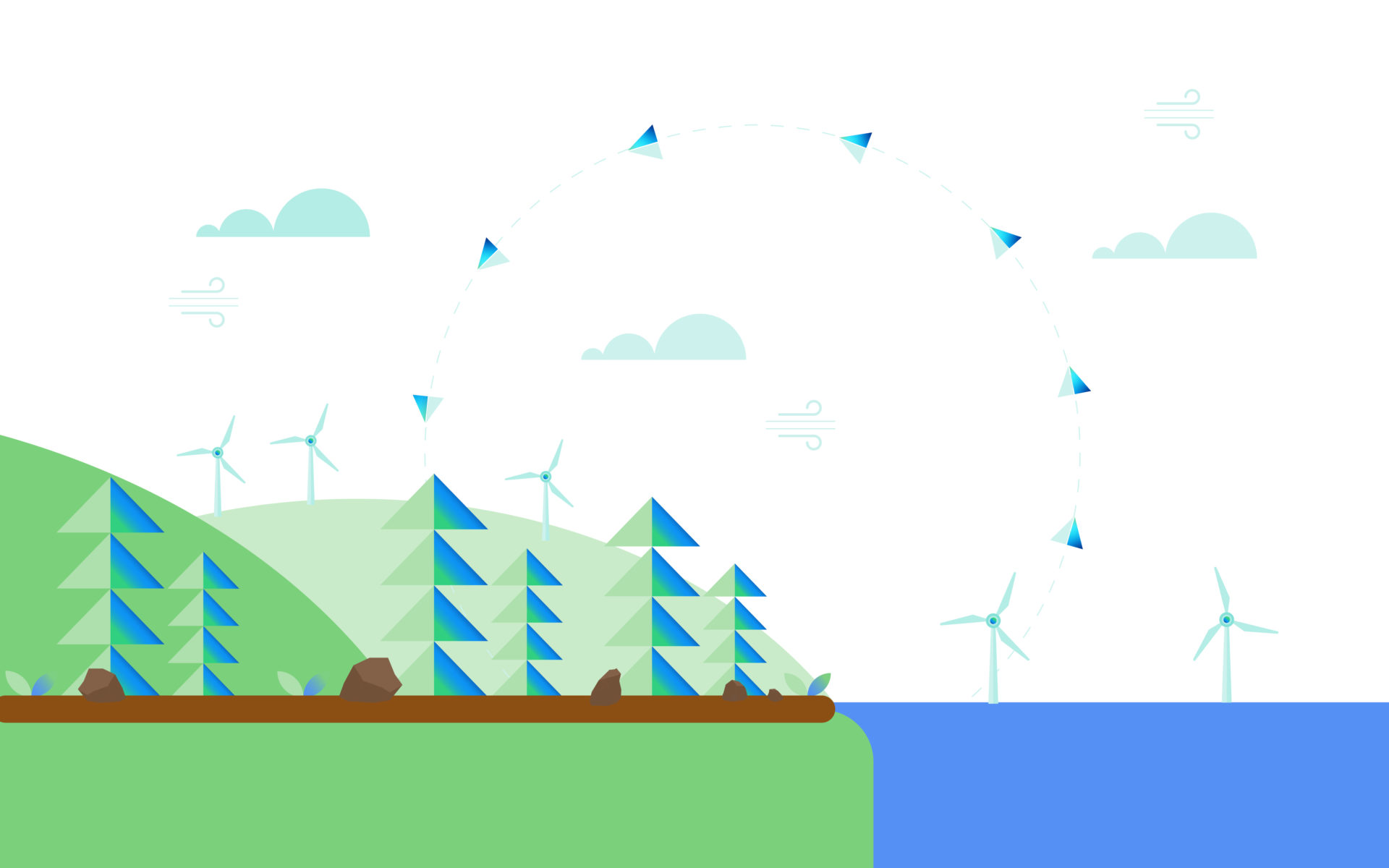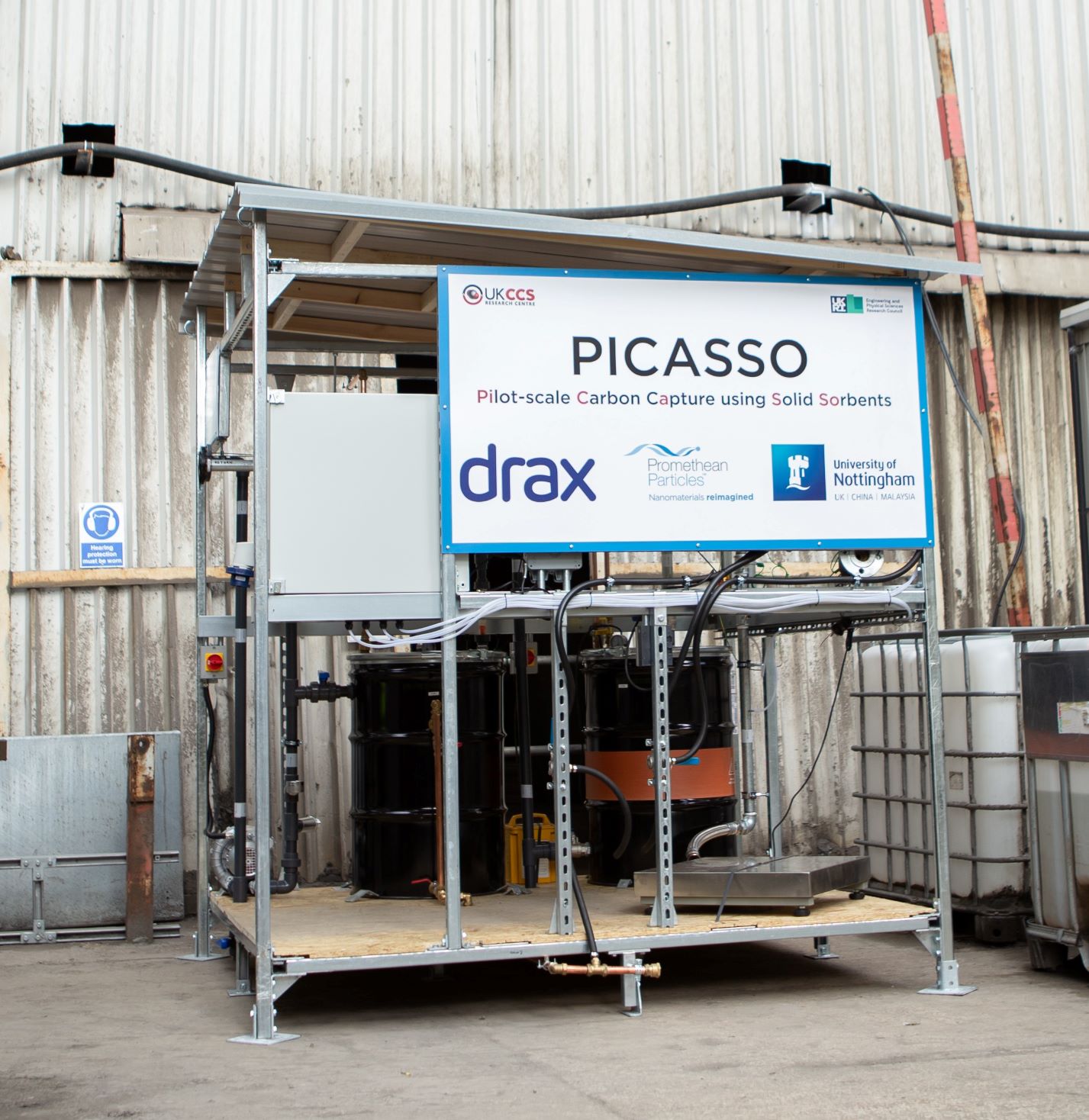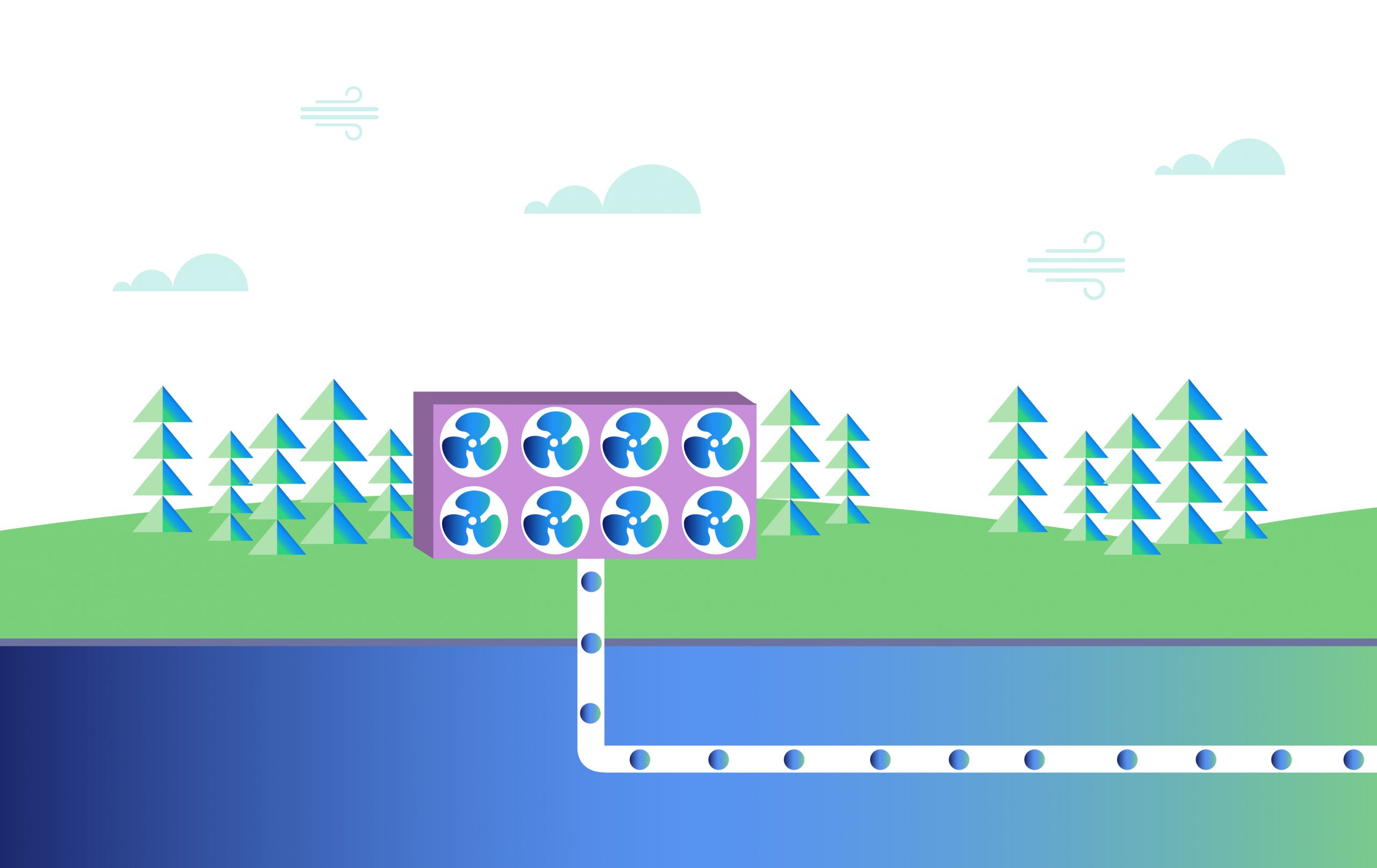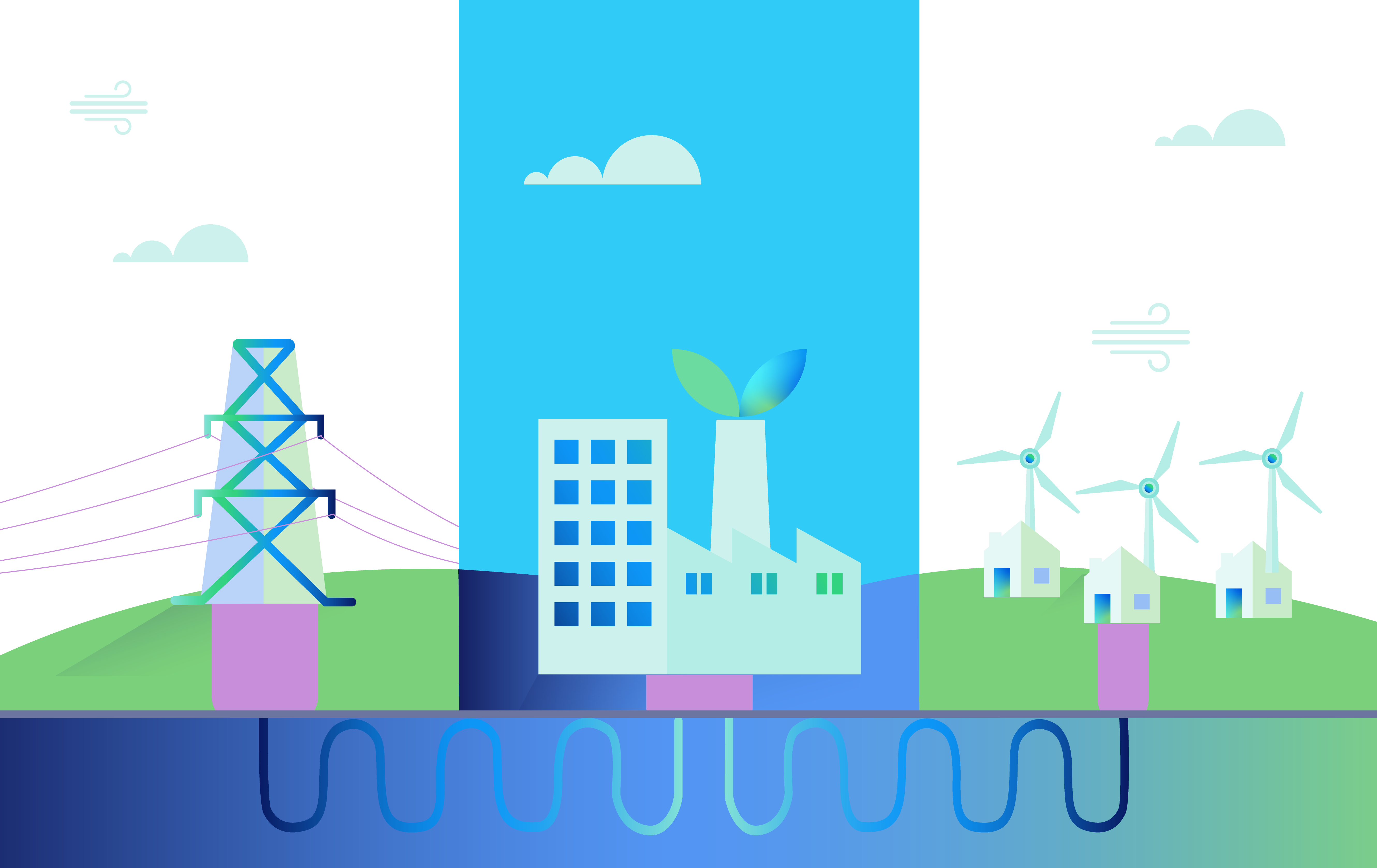
What is the carbon cycle?
All living things contain carbon and the carbon cycle is the process through which the element continuously moves from one place in nature to another. Most carbon is stored in rock and sediment, but it’s also found in soil, oceans, and the atmosphere, and is produced by all living organisms – including plants, animals, and humans.
Carbon atoms move between the atmosphere and various storage locations, also known as reservoirs, on Earth. They do this through mechanisms such as photosynthesis, the decomposition and respiration of living organisms, and the eruption of volcanoes.
As our planet is a closed system, the overall amount of carbon doesn’t change. However, the level of carbon stored in a particular reservoir, including the atmosphere, can and does change, as does the speed at which carbon moves from one reservoir to another.
What is the role of photosynthesis in the carbon cycle?
Carbon exists in many different forms, including the colourless and odourless gas that is carbon dioxide (CO2). During photosynthesis, plants absorb light energy from the sun, water through their roots, and CO2 from the air – converting them into oxygen and glucose.
The oxygen is then released back into the air, while the carbon is stored in glucose, and used for energy by the plant to feed its stem, branches, leaves, and roots. Plants also release CO2 into the atmosphere through respiration.
Animals – including humans – who consume plants similarly digest the glucose for energy purposes. The cells in the human body then break down the glucose, with CO2 emitted as a waste product as we exhale.
CO2 is also produced when plants and animals die and are broken down by organisms such as fungi and bacteria during decomposition.
What is the fast carbon cycle?
The natural process of plants and animals releasing CO2 into the atmosphere through respiration and decomposition and plants absorbing it via photosynthesis is known as the biogenic carbon cycle. Biogenic refers to something that is produced by or originates from a living organism. This cycle also incorporates CO2 absorbed and released by the world’s oceans.
The biogenic carbon cycle is also called the “fast” carbon cycle, as the carbon that circulates through it does so comparatively quickly. There are nevertheless substantial variations within this faster cycle. Reservoir turnover times – a measure of how long the carbon remains in one location – range from years for the atmosphere to decades through to millennia for major carbon sinks on land and in the ocean.
What is the slow carbon cycle?
In some circumstances, plant and animal remains can become fossilised. This process, which takes millions of years, eventually leads to the formation of fossil fuels. Coal comes from the remains of plants that have been transformed into sedimentary rock. And we get crude oil and natural gas from plankton that once fell to the ocean floor and was, over time, buried by sediment.
The rocks and sedimentary layers where coal, crude oil, and natural gas are found form part of what is known as the geological or slow carbon cycle. From this cycle, carbon is returned to the atmosphere through, for example, volcanic eruptions and the weathering of rocks. In the slow carbon cycle, reservoir turnover times exceed 10,000 years and can stretch to millions of years.
How do humans impact the carbon cycle?
Left to its own devices, Earth can keep CO2 levels balanced, with similar amounts of CO2 released into and absorbed from the air. Carbon stored in rocks and sediment would slowly be emitted over a long period of time. However, human activity has upset this natural equilibrium.
Burning fossil fuel releases carbon that’s been sequestered in geological formations for millions of years, transferring it from the slow to the fast (biogenic) carbon cycle. This influx of fossil carbon leads to excessive levels of atmospheric CO2, that the biogenic carbon cycle can’t cope with.
As a greenhouse gas that traps heat from the sun between the Earth and its atmosphere, CO2 is essential to human existence. Without CO2 and other greenhouse gases, the planet could become too cold to sustain life.
However, the drastic increase in atmospheric CO2 due to human activity means that too much heat is now retained between Earth and the atmosphere. This has led to a continued rise in the average global temperature, a development that is part of climate change.
Where does biomass fit into the carbon cycle?
One way to help reduce fossil carbon is to replace fossil fuels with renewable energy, including sustainably sourced biomass. Feedstock for biomass energy includes plant material, wood, and forest residue – organic matter that absorbs CO2 as part of the biogenic carbon cycle. When the biomass is combusted in energy or electricity generation, the biogenic carbon stored in the organic matter is released back into the atmosphere as CO2.
This is distinctly different from the fossil carbon released by oil, gas, and coal. The addition of carbon capture and storage to bioenergy – creating BECCS – means the biogenic carbon absorbed by the organic matter is captured and sequestered, permanently removing it from the atmosphere. By capturing CO2 and transporting it to geological formations – such as porous rocks – for permanent storage, BECCS moves CO2 from the fast to the slow carbon cycle.
This is the opposite of burning fossil fuels, which takes carbon out of geological formations (the slow carbon cycle) and emits it into the atmosphere (the fast carbon cycle). Because BECCS removes more carbon than it emits, it delivers negative emissions.

Fast facts
- According to a 2019 study, human activity including the burning of fossil fuels releases between 40 and 100 times more carbon every year than all volcanic eruptions around the world.
- In March 2021, the Mauna Loa Observatory in Hawaii reported that average CO2 in the atmosphere for that month was 14 parts per million. This was 50% higher than at the time of the Industrial Revolution (1750-1800).
- There is an estimated 85 billion gigatonne (Gt) of carbon stored below the surface of the Earth. In comparison, just 43,500 Gt is stored on land, in oceans, and in the atmosphere.
- Forests around the world are vital carbon sinks, absorbing around 7.6 million tonnes of CO2 every year.
Go deeper
- Can carbon capture take the UK beyond net zero?
- The carbon cycle and the impact of changes to it
- Forests, net zero, and the science behind biomass
- Atmospheric CO2 now hitting 50% higher than pre-industrial levels
- What are fossil fuels?































